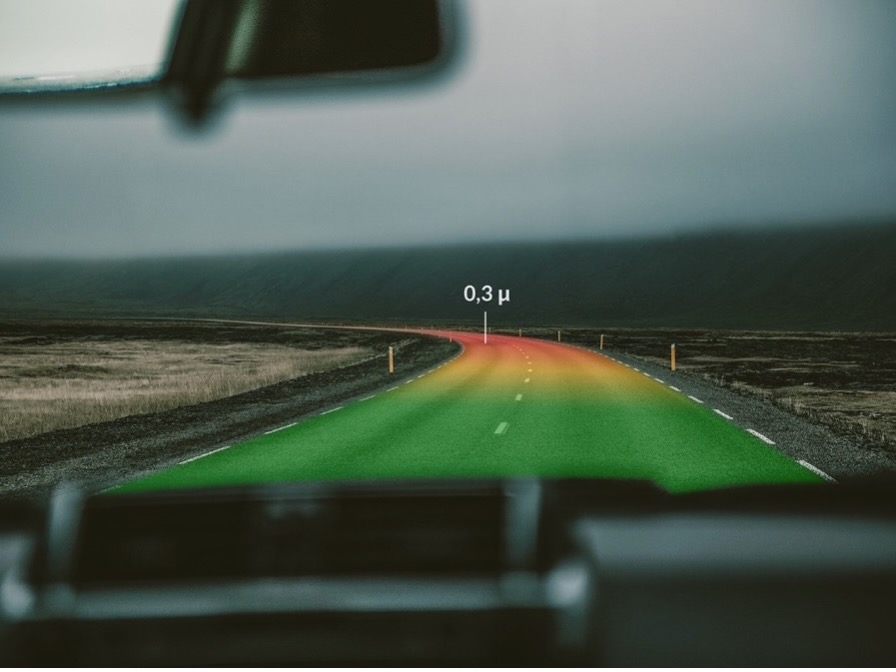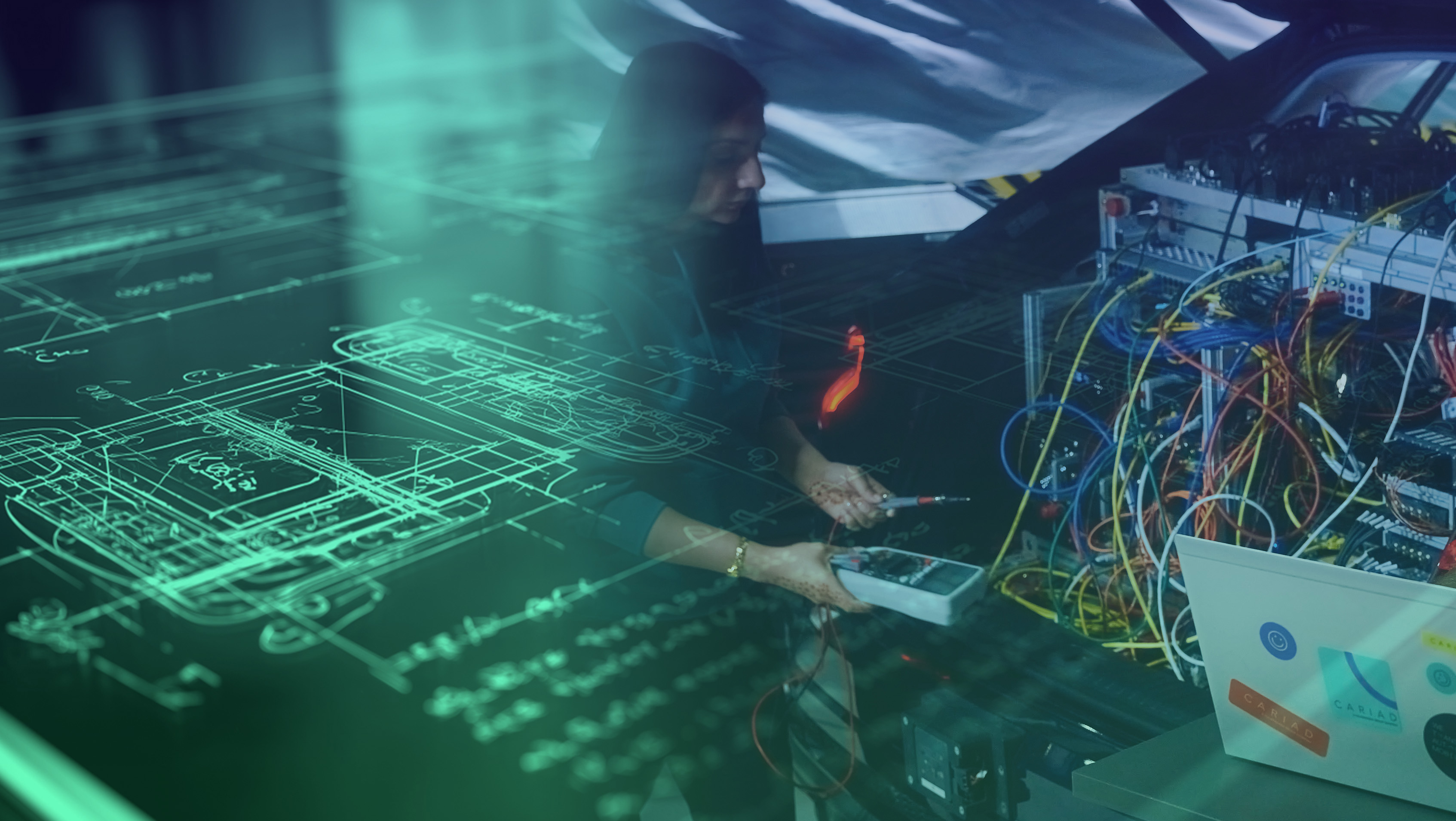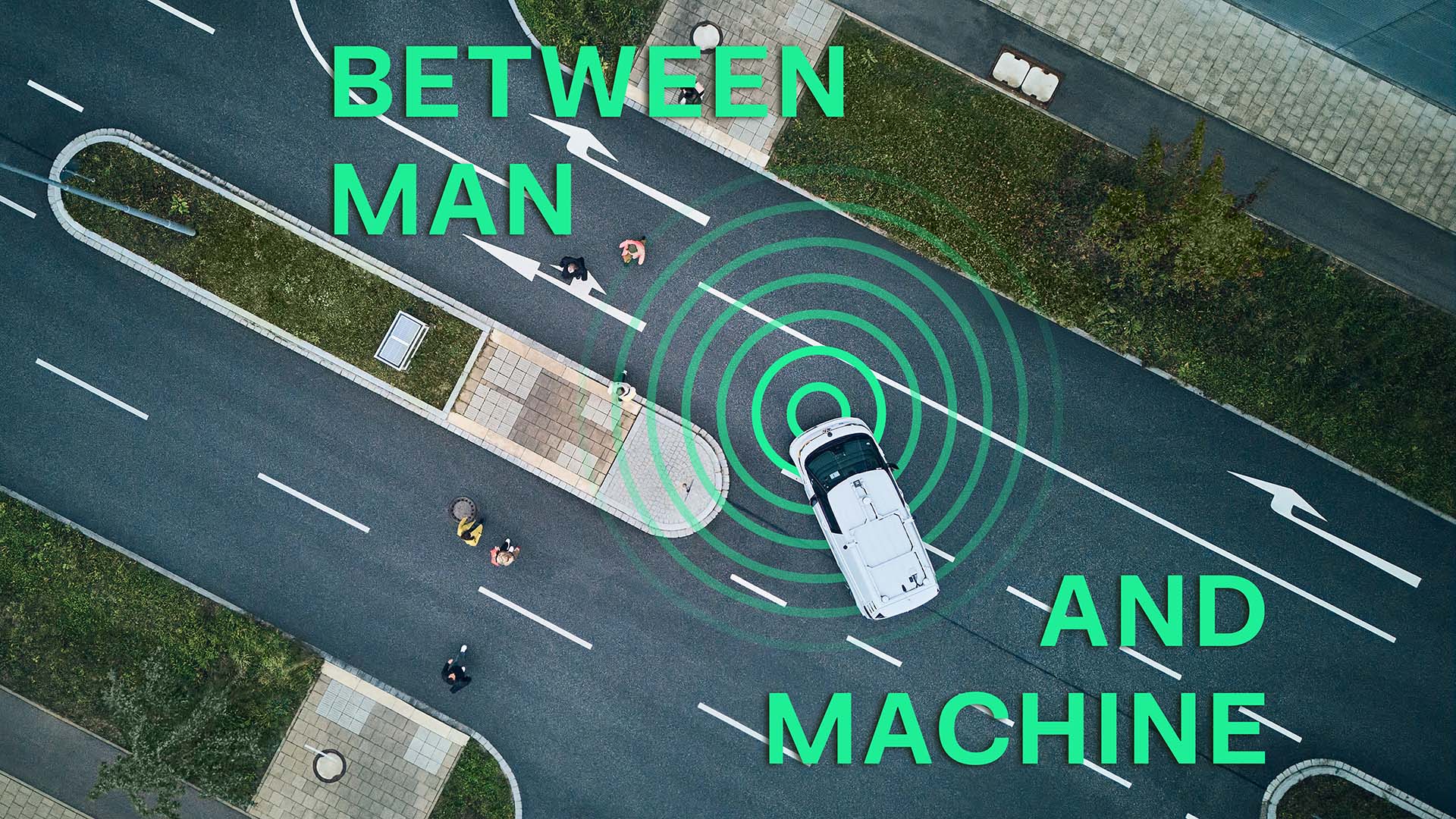Getting a grip on road conditions
CARIAD and NIRA extend cooperation to map icy and slippery road conditions
 Low grip area ahead. Coefficient of friction information generated from swarm data can warn vehicles of local hazards in advance. [Image: NIRA Dynamics]
Low grip area ahead. Coefficient of friction information generated from swarm data can warn vehicles of local hazards in advance. [Image: NIRA Dynamics]
When the road is wet, get your foot off the gas and adapt your speed. Every driver knows that. However, it is not always easy to judge by eye where a slippery road begins and where the icy spots might be hiding.
In order to better understand the condition on the roads, production vehicles of the Volkswagen Group brands are already collecting data on a large scale. CARIAD and its Swedish subsidiary NIRA Dynamics are using this data to offer an important safety function – and build a base for future self-driving functions.
Estimating the grip
With the help of their sensors, customer vehicles from Audi, Skoda, Seat and Volkswagen estimate the coefficient of friction between their tires and the current road segment they are driving on. Privacy-by-design ensures the privacy of the customers at all times. The coefficient of friction allows for the calculation of the traction of the vehicle. In short: it’s a gauge for the grip on the road.
Based on the swarm information of the vehicles that is collected and routed by CARIAD, NIRA creates a digital map base with high-precision information on the condition of the respective road section. It can seamlessly be embedded in today’s driver assistance systems. The grip information from the vehicle swarm is shared so that other vehicles can also benefit from this valuable data. They receive information on slippery conditions for certain sections of the route - almost in real-time. Drivers can be warned via the driver information display and adjust to the changed conditions in good time.
This safety function was introduced by Audi as early as 2021 as a significant improvement of the Local Hazard Information – in close cooperation with CARIAD, NIRA and HERE. Since then, the fleet of vehicles that collect data has grown considerably.
Around three million vehicles from various Volkswagen Group brands are now available to collect grip data on the road. And the fleet continues to expand even further. NIRA collects the data anonymously and openly. In addition to swarm data from CARIAD and the Volkswagen Group, other manufacturers can also enhance and use the digital map base.
The grip information doesn't just help drivers. Infrastructure operators such as road transport companies in Sweden and the Netherlands are already using NIRA's services. They can be used to make road maintenance and clearance more efficient during the winter months, for example.
Guiding self-driving vehicles
The anonymized data on the grip information comes from the largest possible swarm of users: from different vehicles and from different countries. Information for the US and Europe is readily available. An expansion of the service to the Chinese market is already in preparation.
In a next step, CARIAD and NIRA are also working on expanding the functional scope of the grip map. After all, road conditions are an important foundation for future highly automated driving functions. For these, the swarm data from the vehicles will be enhanced even further. The data base will soon include highly-available information from third-party providers, such as weather portals. In this way, swarm data will make a decisive contribution to ensuring that automated vehicles can also maneuver safely through the oncoming driving sections adapted to the current road conditions.




